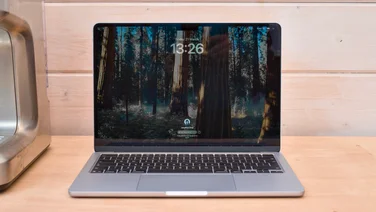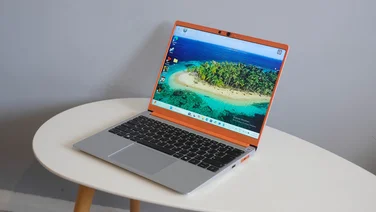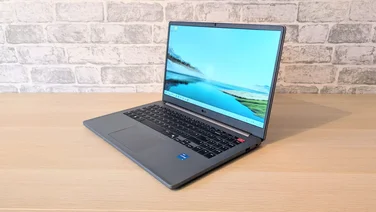To help us provide you with free impartial advice, we may earn a commission if you buy through links on our site. Learn more




Toshiba’s latest mid-range laptop might not look any different from the other machines in the manufacturer’s current line-up, but it’s easily one of the most exciting. It’s the first laptop we’ve seen powered by a Llano Accelerated Processing Unit (APU), the first from AMD capable of taking on Intel’s mighty second-generation Core processors. Judging by this laptop’s performance, Llano looks set to shake up the budget laptop market.

The Satellite L755D uses one of the lowest-frequency A6 processors currently in production, the A6-3400M, which runs at 1.4Ghz and is paired with a generous 6GB of RAM. The clock speed may not seem particularly fast, but AMD’s new Turbo Core feature can increase this up to 2.4GHz for better performance in intensive applications, in a similar way to the Turbo Boost technology found on Intel chips. It achieved an overall score of 35 in our multimedia benchmarks, which is a few points behind the average Intel Core i3 laptop.
Although desktop performance is only average, the processor’s integrated graphics are nothing short of revolutionary. In our Dirt 3 benchmark, which runs at 1,280×720 with High detail and 4x anti-aliasing, it managed a nearly-playable 25fps. We could run the game at the laptop’s native 1,366×768 resolution in High detail at a playable 31fps, once we turned off anti-aliasing. This should mean that almost all current generation games will be playable with a bit of tweaking.

In spite of the impressive graphics performance, the A6 APU is still very energy-friendly. The Satellite L755D managed nearly six and a half hours in our light-use battery test, which, although not quite enough for all-day computing, is still around an hour longer than the average Core i3 laptop.

We were impressed with the hardware inside, but the Satellite L755D’s exterior didn’t provide much excitement. In spite of the radically changed interior, Toshiba has reused the same chassis found in the rest of the L755 line-up, including the red plastic chassis and 15.6in glossy screen. Connectivity is also identical, with three USB ports, VGA and HDMI video outputs, a multi-format card reader that supports the latest SDXC cards and a DVD re-writer. There’s no USB3 support, unfortunately.
The screen is also unchanged, with a 1,366×768 display resolution and glossy finish that produces vibrant colours, but also lots of light reflections. Viewing angles were only average, but there was a decent amount of screen tilt to compensate for this.
It was easy to type on the full-size keyboard, even though each key felt quite tightly grouped with its neighbours. There’s even room for a separate numberic keypad, with only the function keys reduced in size in order to squeeze it into the 15in chassis. The widescreen touchpad perfectly matches the screen, which made navigating the desktop very easy. The two massive touchpad buttons feel both firm and responsive, but we would have preferred a larger touchpad instead.

As the first commercial release of Llano, we can finally confirm what we’ve expected since AMD first showed off the technology. If you’re going to be upgrading or buying a laptop in the next few months, and have a modest budget, there’s little doubt that you should look for a model that uses Llano. Desktop performance won’t set the world on fire, but gaming potential and great battery life easily eclipse this shortfall. Anyone on a larger budget would be better off with a more powerful Intel machine with dedicated graphics, but right now AMD is unquestionably the entry-level king.
The Satellite L755D is a great showcase for Llano and is currently excellent value at £450, but unless you’re desperate for a new laptop we’d recommend waiting for other manufacturers to announce their new models before buying.






